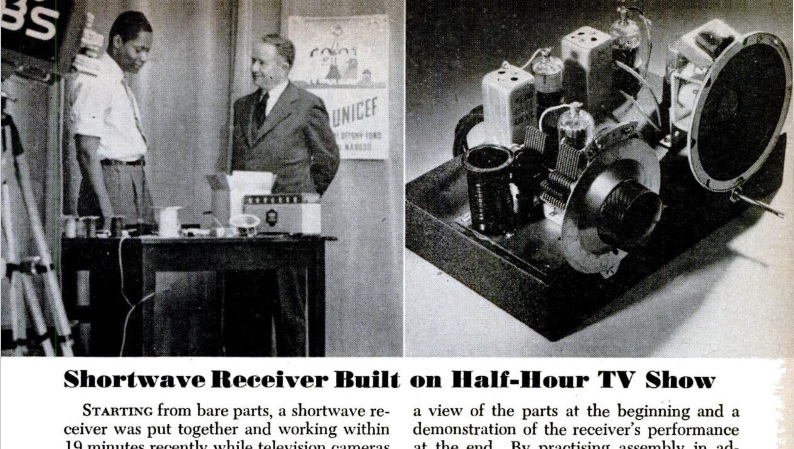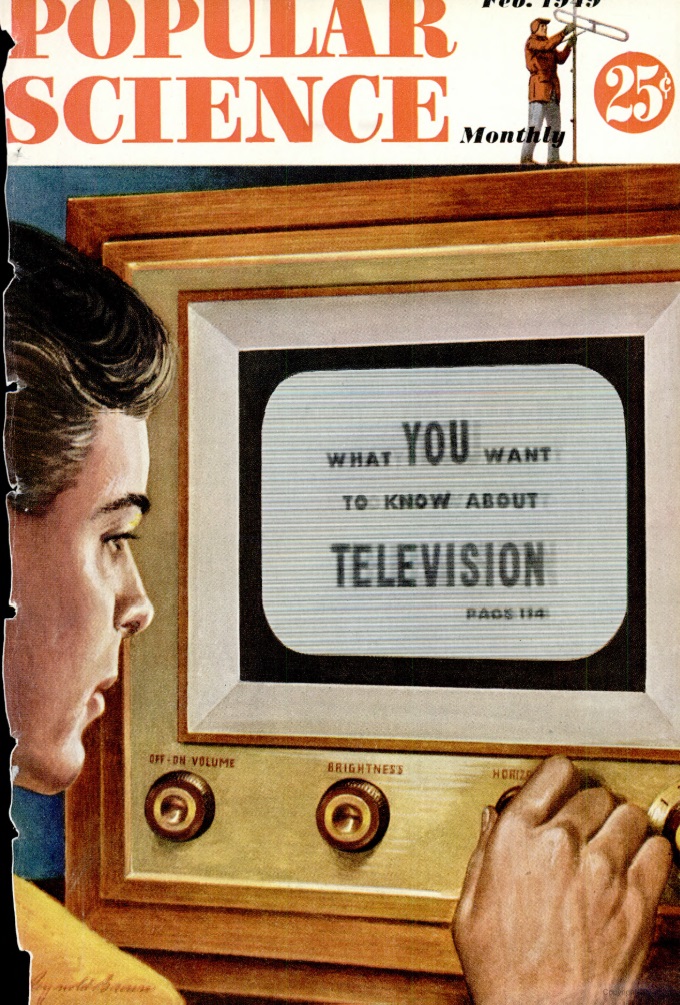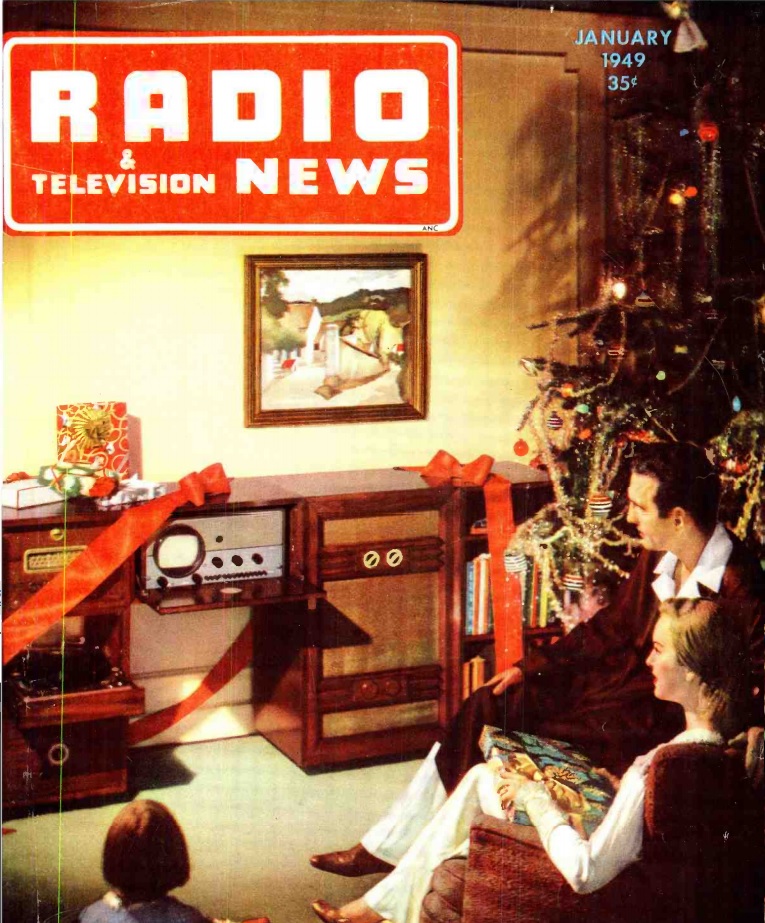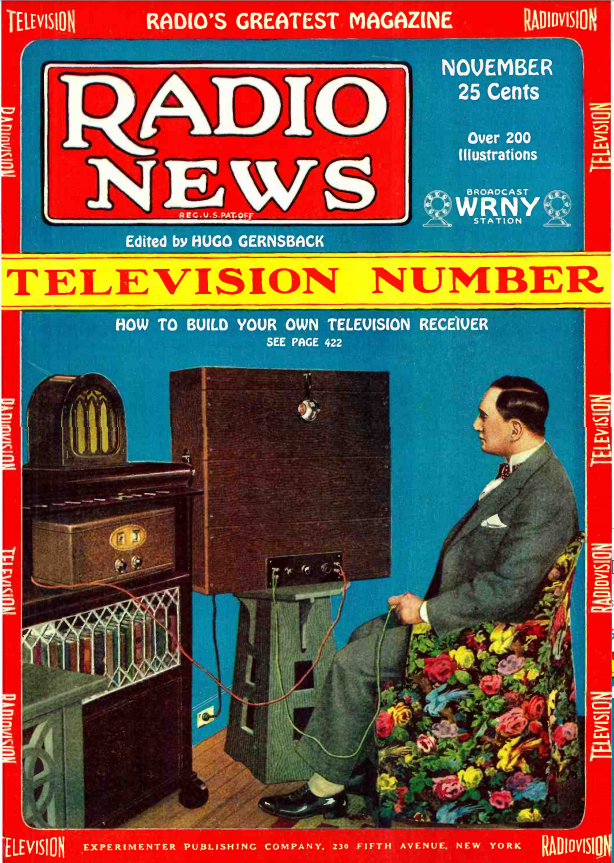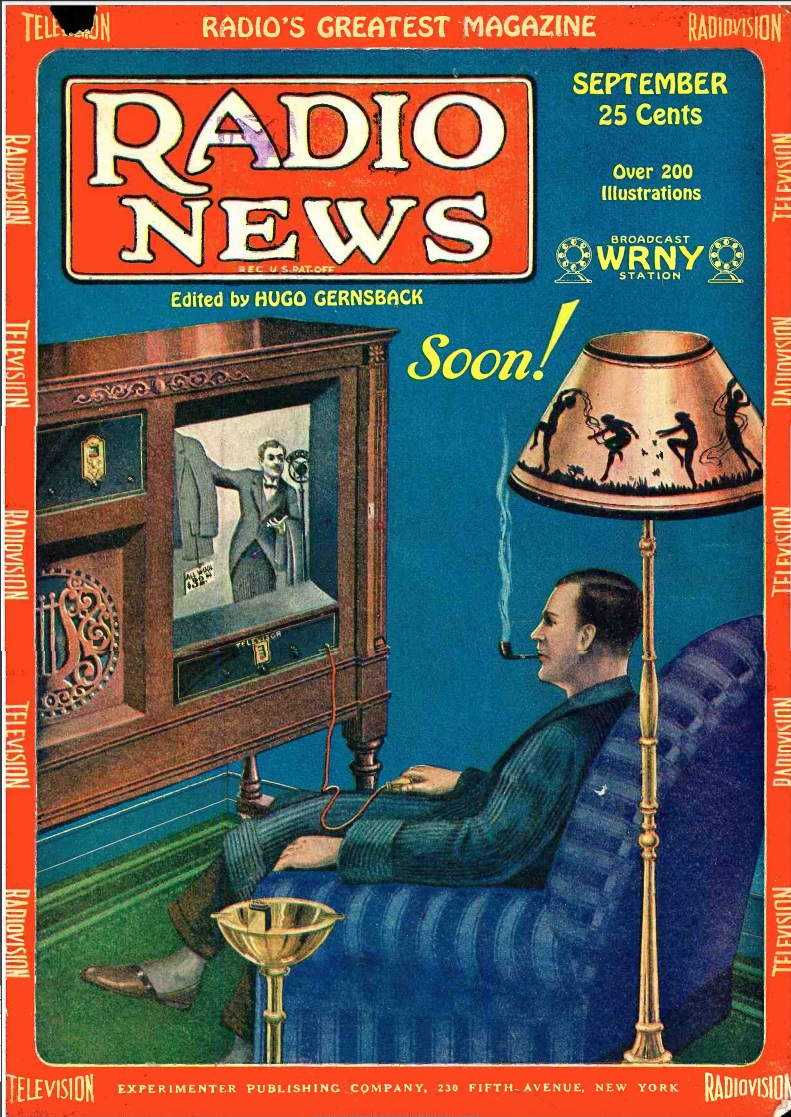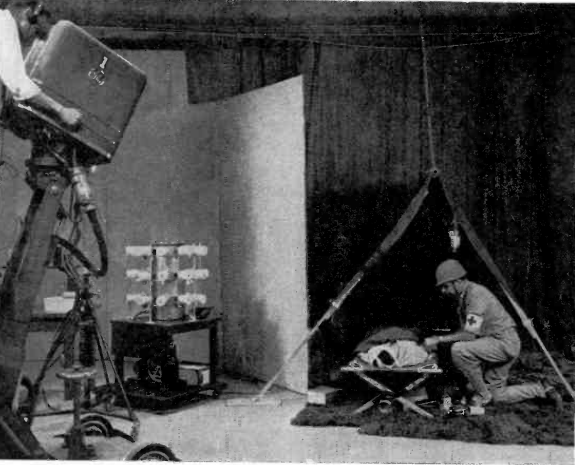 We have to admit that today’s vintage TV program isn’t quite as good as the one we shared yesterday, in which a shortwave receiver was built from scratch before live TV cameras. But radio parts were hard to find during the war, so WRGB in Schenectady, NY, had to work with what was available, and that was blood.
We have to admit that today’s vintage TV program isn’t quite as good as the one we shared yesterday, in which a shortwave receiver was built from scratch before live TV cameras. But radio parts were hard to find during the war, so WRGB in Schenectady, NY, had to work with what was available, and that was blood.
The February-March 1944 issue of National Radio News detailed another “first” in American television, namely the first broadcast of an actual blood donation. As part of a three-part broadcast showcasing the American Red Cross, the blood donation was done live on the air. Another part of the broadcast showed it being processed into plasma.
The program concluded with the scene shown above, the staging of a battlefield scene where the plasma was administered.

